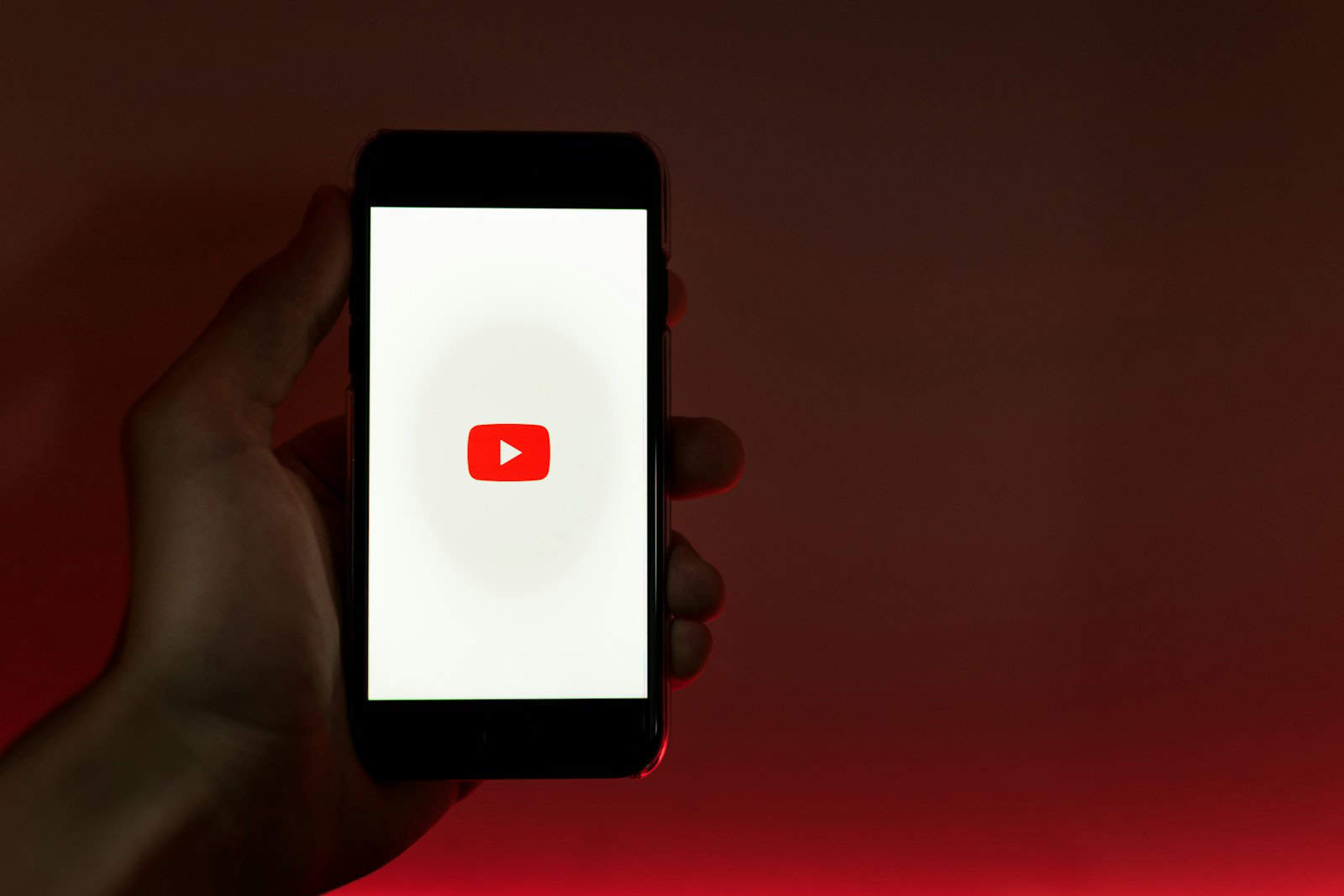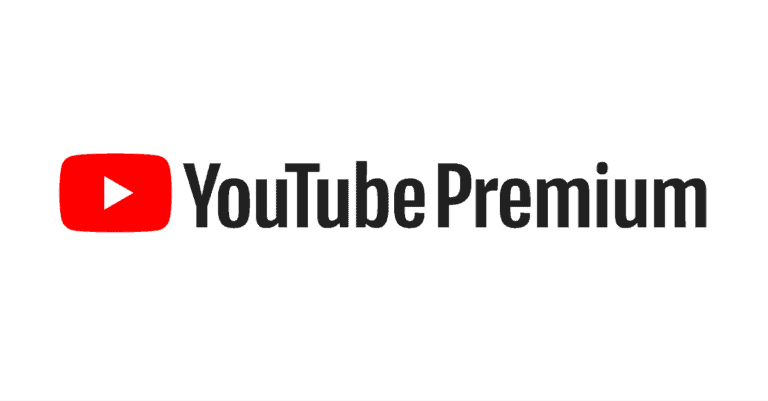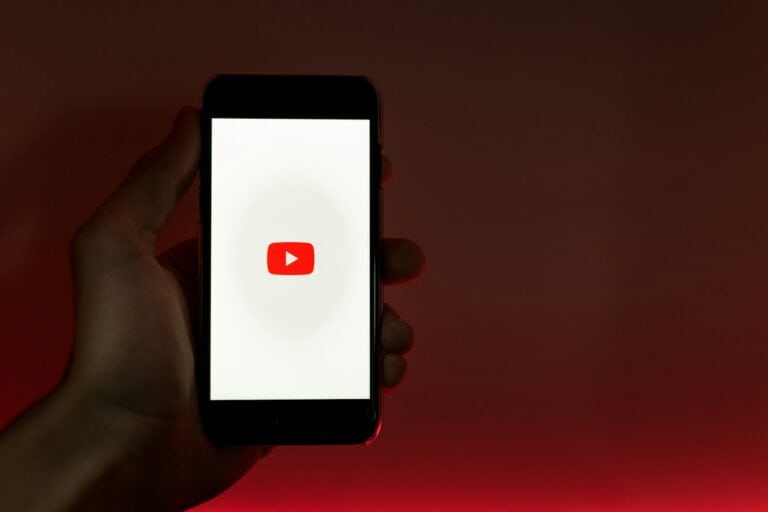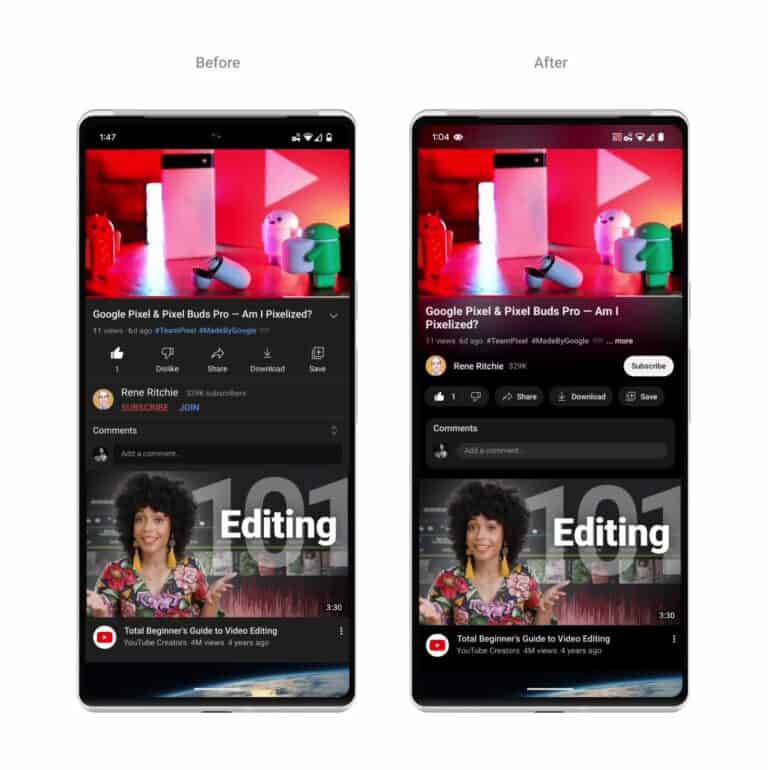
Are you tired of waiting through endless ads before watching your favorite YouTube videos? You’re not alone. Many viewers find those interruptions frustrating when they just want to enjoy content. You can watch YouTube without commercials by subscribing to YouTube Premium, using ad blockers, or trying alternative YouTube front-end platforms.
YouTube has become the go-to platform for video content, but its advertising model can disrupt the viewing experience. Some ads are skippable after a few seconds, while others force you to wait through the entire commercial. This has led many users to search for ways to create a smoother, uninterrupted viewing experience.
While YouTube relies on ad revenue to support creators, there are both official and unofficial methods to enjoy an ad-free experience. Each option comes with different benefits and considerations regarding legality, creator support, and ease of use.
Ways To Watch YouTube Without Commercials
YouTube ads have become increasingly frequent and disruptive, especially for viewers who binge content or use the platform as background noise. While YouTube Premium is the official solution, it’s not the only way to enjoy an ad-free experience. Below are the most effective and popular ways to watch YouTube without commercials—some official, others more creative.
1. Subscribe to YouTube Premium
The simplest and most reliable option. YouTube Premium removes all ads across YouTube and YouTube Music, and includes offline downloads and background play.
- Cost: $13.99/month (U.S.)
- Family plan and student discounts available
- Bonus: No ads on smart TVs, mobile devices, and the web
If you use YouTube daily, this is often worth the subscription.
2. Use an Ad Blocker on Web Browsers
Browser-based ad blockers can block most, if not all, YouTube ads:
- Popular options: uBlock Origin, AdGuard, Ghostery
- These extensions work on Chrome, Firefox, Edge, and Brave
- You can whitelist certain channels to support creators
Note: YouTube has started detecting some ad blockers and showing warning messages, but most blockers are still effective if updated regularly.
3. Try Brave Browser
Brave is a privacy-focused web browser with built-in ad blocking:
- No need for separate extensions
- Works out of the box to block YouTube ads
- Also speeds up browsing and reduces tracking
This is a great alternative for users who prefer a standalone solution without tweaking browser settings.
4. Use Pi-hole (Advanced Users)
Pi-hole is a network-wide ad blocker that filters requests at the DNS level:
- Blocks ads on all devices connected to your Wi-Fi
- Effective for smart TVs, game consoles, and mobile apps
- Requires setting up a Raspberry Pi or similar device
It’s a more technical setup, but incredibly powerful once running.
5. Watch via NewPipe (Android)
NewPipe is an open-source YouTube client for Android:
- No ads, no tracking
- Allows background play and downloads
- Lightweight and privacy-friendly
It’s not available on Google Play, so you’ll need to install it via F-Droid or download the APK directly. Use with caution and only from trusted sources.
6. Use YouTube Vanced (No Longer Updated)
YouTube Vanced was once the most popular ad-free YouTube client for Android:
- Blocked ads, enabled background play, dark mode
- Development has been discontinued due to legal pressure from Google
- Still works for some users with older APKs, but it’s risky and unsupported
If you’re still using Vanced, consider switching to ReVanced, its community-maintained successor.
7. Access YouTube Through Smart TVs or Consoles (Hit or Miss)
In some cases, older smart TV apps or console versions of YouTube delay or skip ads:
- Outdated apps may not serve ads properly
- Not a guaranteed solution—Google updates these frequently
Still, it’s worth checking if you have older devices that run older app versions.
8. Use an RSS Reader with YouTube Support
Some advanced RSS readers like Inoreader or Feedly allow you to subscribe to YouTube channels:
- View videos within the RSS feed (no ads)
- Works best for creators who don’t rely heavily on mid-roll ads
It’s not the best experience for binge-watching, but great for catching specific uploads.
There’s no shortage of ways to dodge YouTube ads. Whether you go official with YouTube Premium or explore free alternatives like ad blockers and NewPipe, there’s a solution for nearly every platform and level of technical skill.
Key Takeaways
- YouTube Premium offers a legitimate ad-free experience while still supporting content creators you enjoy watching.
- Ad-blocking browser extensions like Adblock for YouTube can remove ads but may raise ethical questions about creator compensation.
- Alternative solutions include reporting irrelevant ads, using YouTube clones, or specialized browsers that offer built-in ad blocking.
Understanding YouTube and Its Ecosystem
YouTube has grown from a simple video-sharing website into a complex platform that balances creator content, viewer experiences, and revenue generation. The platform’s evolution and monetization strategies directly impact how you experience videos and advertisements.
Evolution of Streaming and Video Sharing
YouTube began in 2005 as a basic platform where users could upload and share videos. Since then, it has transformed into the world’s second-largest search engine and the dominant video streaming service with over 2 billion monthly users.
The quality of content has dramatically improved from early low-resolution videos to today’s 4K and even 8K offerings. Content creators have evolved too – from casual uploaders to professional “YouTubers” who make full-time careers creating videos.
The platform’s algorithm has become increasingly sophisticated, analyzing your viewing habits to recommend content that keeps you watching longer. This evolution has created both opportunities and challenges for viewers seeking ad-free experiences.
Monetization: Ads and Revenue
YouTube relies heavily on advertising as its primary revenue model. When you watch videos, YouTube displays ads before, during, and after content to generate income that’s shared with creators.
The platform offers several ad formats:
- Pre-roll ads that play before videos
- Mid-roll ads that interrupt longer content
- Banner ads that appear at the bottom of videos
- Skippable ads you can bypass after 5 seconds
- Non-skippable ads that must be watched completely
Many users have responded to increasing ad frequency by using ad blockers, creating a complex relationship between viewers, creators, and the platform. Google has reportedly slowed YouTube performance for ad-block users to discourage this practice.
For creators, YouTube’s monetization system provides income based on viewership and engagement. This relationship means that more ads may appear when ad-blocking becomes prevalent, creating a cycle that affects your viewing experience.
YouTube Premium: An Ad-Free Experience
YouTube Premium offers viewers a way to enjoy content without interruptions from advertisements. The service combines various benefits that enhance your viewing experience while supporting creators you love.
Benefits of YouTube Premium
When you subscribe to YouTube Premium, you get videos without interruptions from ads before and during playback. This means no more waiting through commercials to see your favorite content.
The ad-free experience applies to the platform’s built-in advertising system, not creator-made content. As Reddit users point out, YouTube Premium removes platform ads but not sponsorships or promotions that creators include in their videos.
You also gain access to background play, allowing videos to continue playing when you switch apps or lock your screen. This feature is perfect for listening to music or podcasts.
YouTube Music Premium comes included with your subscription, giving you ad-free music streaming with offline capabilities.
Comparing Subscriptions with Free Access
The standard YouTube Premium subscription costs more than the newer Premium Lite option at $7.99/month, which focuses solely on ad-free viewing without additional features.
With free YouTube, you’ll encounter:
- Pre-roll ads before videos
- Mid-roll interruptions during longer content
- Banner advertisements on the page
- No background play capabilities
Premium subscribers save significant time over months of viewing. Some users report skipping hours of advertisements annually with their subscription.
The value equation depends on your usage patterns. Heavy YouTube users who watch daily will benefit more than occasional viewers. Consider how much the interruption-free experience matters to your enjoyment.
Alternative Ad-Free Solutions
Finding ways to enjoy YouTube without commercials doesn’t always require a premium subscription. Several effective options exist that can help you block or bypass ads while watching your favorite content.
Ad Blockers Overview
Ad blockers work by preventing advertising content from loading while you browse the web, including YouTube. These tools can identify and filter out ad requests before they appear on your screen.
Most ad blockers are free to use and easy to install. Total Adblock is considered one of the most effective options for an interruption-free browsing experience. Other popular choices include AdGuard, uBlock Origin, and AdLock.
When choosing an ad blocker, look for ones that receive regular updates. This ensures they can keep up with YouTube’s changing ad delivery methods. Some ad blockers also offer additional privacy features like tracker blocking and malware protection.
Using Browser Extensions
Browser extensions are the most common way to block YouTube ads. The uBlock Origin extension stands out for its effectiveness and lightweight performance across multiple browsers.
You can install uBlock Origin from the Chrome Web Store if you use Chrome or from the official add-ons page if you prefer Firefox. This powerful tool blocks not just YouTube ads but most advertising across the web.
Brave Browser offers a built-in ad blocker, eliminating the need for additional extensions. It’s designed with privacy in mind and works well for YouTube viewing.
The DuckDuckGo extension focuses on privacy but also includes ad-blocking capabilities. It’s less comprehensive than dedicated blockers but still reduces many YouTube ads.
Third-Party Applications and Services
Beyond browser solutions, several third-party applications can provide ad-free YouTube experiences with extra features. For Android users, modified YouTube apps like FreeTube and NewPipe offer ad-free viewing plus background playback and download options.
SkyTube provides similar functionality, removing ads while adding convenient features not found in the official YouTube app. These alternative clients don’t require you to log in to your YouTube account.
PeerTube represents a completely different approach as an alternative video platform. It’s 100% ad-free by design, though it has significantly fewer content creators than YouTube.
Desktop applications like FreeTube (not related to the Android app) offer privacy-focused, ad-free YouTube viewing for Windows, Mac, and Linux users. These standalone programs often include extra features like channel subscriptions without requiring Google accounts.
Technical Approaches to Blocking YouTube Ads
There are several effective methods to block YouTube ads depending on your device and technical comfort level. Each approach offers different benefits in terms of ease of use, comprehensiveness, and impact on your viewing experience.
Mobile Applications
For mobile users, specialized apps can help you enjoy YouTube without interruptions. Revanced offers an ad-free YouTube experience by modifying the original app with additional features. You don’t need to sign in to a Google account to use it effectively.
NewPipe is another excellent alternative that creates a completely separate interface for YouTube content. It not only blocks ads but also allows background playback and video downloads.
These apps aren’t available in official app stores, so you’ll need to download them from trusted third-party sources. Always verify the authenticity of these sources before installation to protect your device from malware.
Remember that using modified YouTube apps may violate YouTube’s terms of service.
Desktop Solutions
Browser extensions provide the simplest way to block YouTube ads on your computer. Popular ad-blockers like AdGuard effectively remove pre-roll, mid-roll, and banner ads from your YouTube experience.
These extensions work by filtering out ad content before it loads on your page. For the best results, make sure your ad-blocker is updated regularly as YouTube frequently changes how it delivers ads.
Some browsers have built-in ad blocking capabilities that you can enable in your settings. This approach uses fewer system resources than installing additional extensions.
You can also try alternative YouTube front-ends like Invidious that provide a clean interface without advertisements while still accessing all YouTube content.
Network-Level Blocking Techniques
For a more comprehensive solution, network-level blocking can eliminate ads across all your devices simultaneously. VPN services with built-in ad blocking features can filter out advertising content before it reaches any device on your network.
Pi-hole is a powerful option that functions as a network-wide ad blocker. It runs on a Raspberry Pi device and blocks tracking cookies and ad servers at the DNS level, preventing ads from loading on any connected device.
You can also modify your hosts file to block known ad servers. This technique requires more technical knowledge but works without installing additional software.
These methods generally consume fewer system resources than device-level solutions and protect all devices on your network simultaneously.
User Experience and Content Accessibility
Removing ads from YouTube significantly changes how you interact with the platform and affects the overall accessibility of content. These changes impact both viewers seeking uninterrupted experiences and creators who rely on ad revenue.
Navigating the YouTube Interface Without Ads
When you browse YouTube without commercials, the interface becomes cleaner and more streamlined. You’ll notice videos start immediately without pre-roll ads interrupting your viewing flow. This creates a more immersive experience similar to premium streaming services.
One simple method to avoid ads is by adding a hyphen after “youtube” in the URL. For example, change “youtube.com” to “youtube-com” in the address bar when viewing videos.
The YouTube app experience differs from browser-based solutions. While browser extensions work well on computers, mobile users may need alternative approaches like specialized apps or premium subscriptions to achieve an ad-free experience.
Key interface benefits without ads:
- Uninterrupted video playback
- No mid-roll interruptions
- Cleaner video progress bar
- Faster loading times
Impact on Content Creators and Viewers
Ad-free YouTube creates a dual impact on the platform’s ecosystem. For viewers, the experience is undoubtedly more pleasant with seamless content consumption. However, content creators often rely heavily on ad revenue to fund their work.
When you block ads, creators may receive less income for their efforts. Many YouTubers depend on this revenue stream to continue producing the content you enjoy. Some creators have adapted by incorporating accessibility features that benefit all viewers while appealing to wider audiences.
Adding accessibility features to YouTube channels helps creators stand out from competitors. These include proper captions, clear audio, and descriptive video titles—beneficial modifications that improve the experience for everyone regardless of ad settings.
The balance between viewer convenience and creator sustainability remains a central challenge in the YouTube ecosystem. Many users choose to support their favorite creators through alternative means like channel memberships or direct donations.
Types of YouTube Ads and Their Function
YouTube employs several ad formats to monetize content while balancing viewer experience with advertiser needs. Each ad type serves specific purposes in the platform’s ecosystem and understanding them can help you navigate or avoid these interruptions.
Understanding Skippable and Non-Skippable Ads
Skippable ads (also called TrueView ads) appear before, during, or after videos and can be skipped after 5 seconds. These ads give you control over your viewing experience while allowing advertisers to pay only when viewers watch at least 30 seconds or click on the ad.
Non-skippable ads must be watched completely before your video plays. These ads typically run for 15-20 seconds and cannot be bypassed. Advertisers pay premium rates for these slots since they guarantee full viewing.
Both formats appear in similar positions but offer different viewer experiences:
- Skippable: Longer format (up to several minutes) with skip option
- Non-skippable: Shorter format with mandatory viewing
- Placement: Pre-roll, mid-roll, or post-roll positions
YouTube automatically determines when to show these ads based on content length and audience engagement patterns.
Bumper and Overlay Ads
Bumper ads are condensed 6-second non-skippable videos that play before your selected content. These brief interruptions are designed to deliver quick brand messages without significantly disrupting your viewing experience.
Overlay ads appear as semi-transparent banners at the bottom of videos. They cover approximately 20% of the video screen and can be closed by clicking the “X” in the corner. These ads are less intrusive as they allow you to continue watching your video while they’re displayed.
Key characteristics include:
- Bumper ads: Quick, non-skippable, designed for mobile viewing
- Overlay ads: Text or image-based, appear only on desktop
- User impact: Bumpers require minimal time commitment while overlays let you continue viewing
These formats are popular with advertisers seeking either high-impact brief messaging or extended visibility without forcing viewers to pause content.
YouTube Shorts and Their Unique Ad Model
YouTube Shorts ads operate differently from traditional YouTube advertising. These ads appear between Shorts as you scroll through the feed, mimicking the TikTok and Instagram Reels experience.
The Shorts ad format is specifically designed for vertical, mobile-first content. Unlike traditional YouTube videos, these ads are brief and tailored for the short-form video experience:
- Format: Vertical, full-screen video ads
- Duration: Typically 10-60 seconds
- User interaction: Swipe to skip or continue watching
Shorts ads often feature direct calls-to-action and focus on immediate engagement rather than brand storytelling. They’re particularly effective for reaching younger audiences who prefer short-form content consumption.
You’ll notice these ads maintain the mobile-friendly vertical orientation and quick-consumption style that defines the Shorts platform itself.
Legal Considerations and Ethical Use
Using YouTube without commercials involves navigating important legal and ethical concerns. The way you choose to block ads can have implications for content creators and potentially raise copyright issues.
Copyright Laws and Ad Blocking
Fair use is a legal doctrine that allows limited use of copyrighted material without permission from rights holders. However, this doesn’t necessarily extend to ad blocking.
When you use ad blockers on YouTube, you’re not directly violating copyright laws since you’re not redistributing content. You’re simply changing how content displays on your device.
YouTube’s terms of service don’t explicitly forbid ad blockers, but the platform actively works to detect and circumvent them. This creates a cat-and-mouse game between YouTube and ad-blocking technologies.
Some content creators have expressed that ad blocking affects their income, as they receive revenue from ad views. This doesn’t constitute legal infringement but raises ethical questions about creator compensation.
The Debate Over Ad Blockers’ Ethics
The ethical debate around ad blockers centers on balancing user experience with creator compensation. When you block ads, you’re potentially reducing income for content creators who rely on ad revenue.
Some argue that intrusive, excessive ads justify blocking. Others point out that YouTube’s Premium subscription offers an ethical alternative – you get ad-free viewing while creators still receive compensation.
Key ethical considerations include:
- Creator compensation and sustainability
- User experience and viewing comfort
- Data usage and privacy concerns
- Supporting the platforms that host content
Many viewers compromise by allowing ads on channels they want to support while blocking elsewhere. Some creators have adapted by using alternative funding models like:
- Direct sponsorships
- Merchandise sales
- Crowdfunding through Patreon or similar platforms
Frequently Asked Questions
Many YouTube users have questions about avoiding commercials while watching content. These FAQs address the most common concerns about ad-free viewing options and premium services.
How can users watch videos on YouTube without encountering ads?
Users can watch YouTube without commercials by subscribing to YouTube Premium, which removes ads before and during videos. This paid subscription eliminates interruptions from ads while watching content.
You can also use ad-blocking browser extensions, though YouTube discourages this practice. These tools may block most ads but aren’t always 100% effective.
Some creators offer ad-free viewing experiences through direct support models like Patreon or memberships.
Is there an official subscription model to remove ads on YouTube?
Yes, YouTube Premium is the official way to remove ads. It’s YouTube’s subscription service specifically designed to provide an ad-free viewing experience.
You won’t see third-party banner ads or video advertisements when using the service. Premium removes the pre-roll, mid-roll, and post-roll ads that typically appear during videos.
Can viewers access ad-free YouTube content without paying?
Technically, viewers can use ad-blocking extensions to avoid most ads without paying. However, this approach isn’t supported by YouTube and may violate terms of service.
It’s important to note that YouTube Premium is not entirely ad-free as creator-inserted sponsorship segments will still appear. These in-video promotions are part of the creator’s content.
Some creators may upload ad-free versions of their content on other platforms for their supporters.
What are the benefits of the YouTube Premium subscription aside from ad removal?
YouTube Premium offers background play, allowing videos to continue playing when you switch apps or lock your screen. This feature is particularly useful for music or podcasts.
You get access to YouTube Music Premium as part of your subscription. This includes ad-free music streaming and offline downloads.
Premium subscribers can download videos for offline viewing. This helps when traveling or in areas with poor internet connection.
You also gain access to YouTube Originals content, though this library has been reduced in recent years.
How does the YouTube Premium family plan work and what does it offer?
The YouTube Premium family plan allows up to 5 family members living in the same household to enjoy Premium benefits. Each member gets their own separate account with personalized experiences.
All members receive the complete Premium package including ad-free viewing, background play, and downloads. The family plan offers significant savings compared to individual subscriptions.
The family manager must invite members to join the plan. All members must periodically share their location to verify household residency.
Are there any annual subscription options for YouTube Premium, and what are the savings compared to monthly plans?
YouTube offers annual subscription options in some regions, providing substantial savings compared to paying monthly. The exact discount varies by country but typically ranges from 15-20%.
The annual plan requires a one-time payment for the full year. This upfront cost is higher but results in overall savings.
Not all regions have access to annual plans yet. You should check the YouTube Premium subscription page in your country to see available options.




